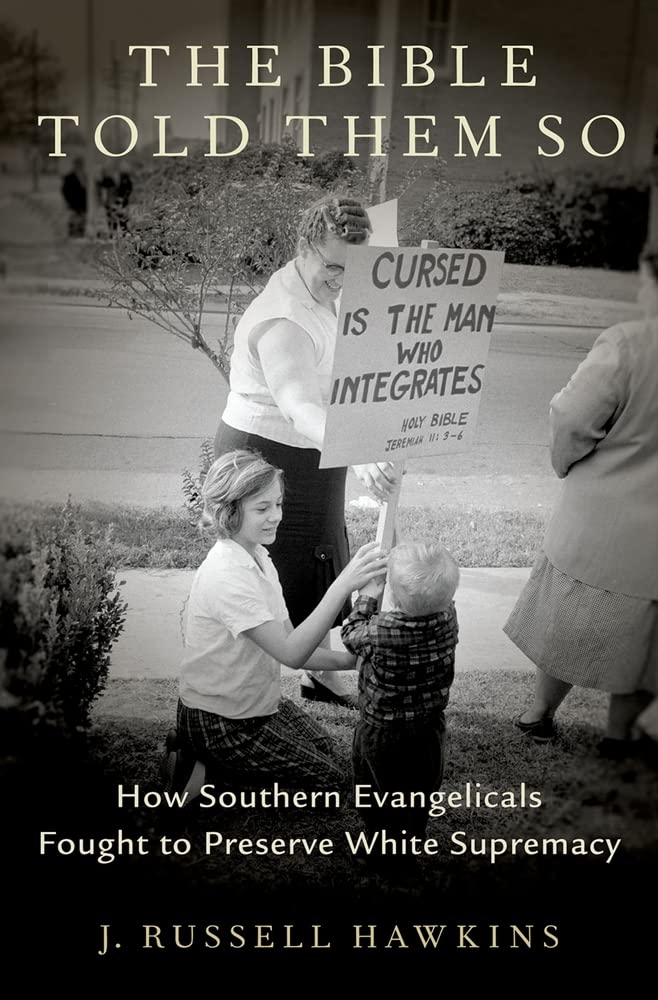In The Bible Told Them So: How Southern Evangelicals Fought to Preserve White Supremacy, Hawkins places debates like those taking place in the SBC in a much larger frame. Focusing on the denominational workings of both the Southern Baptist Church and the Methodist Episcopal Church in South Carolina, Hawkins unflinchingly shows how segregationist Christians drew from their faith in opposing the modern civil rights movement. But in the book’s reflection upon the relationship between race and religion in modern America, Hawkins also has a lot to teach us about our own moment as well.
At its core, Hawkins sets out to make a rather academic point. In his classic religious history of the civil rights movement, Stone of Hope: Prophetic Religion and the Death of Jim Crow, historian David Chappell argues that one of the reasons that the civil rights movement enjoyed success was because segregationist Christians failed to mount a prophetic defense of Jim Crow. Hawkins claims that nothing could be further from the truth. As he writes, “white southerners did not undertake their resistance to black equality in spite of their religious convictions, but their faith drove their support for Jim Crow segregation.”
The result is a book that is as damning of American Christianity as it is blunt in its witness to the damnable things that American Christians say.
The book opens with an exploration of the “segregationist theology” that many Southern, white Christians marshalled in the wake of the Supreme Court’s historic 1954 Brown ruling. At a time when federal officials and even some higher ups within the Southern Baptist Convention expressed at least tacit support for integration, many Southern white Christians turned to their faith in order to justify their support of segregation.
Of particular concern to these segregationists was interracial relationships. The integration of public spaces like schools and businesses, they believed, would inevitably lead to the integration of private places like churches and homes, which would, in turn, give rise to interracial families. As Pastor W. M. Nevins said on the floor of the 1954 SBC meeting, held only months after the Supreme Court’s ruling:
“I do not believe that the Bible teaches and I do not believe that God approves amalgamation of the races. … if we’re going to eat with them and go to school with them and go to church with them, the time is going to come … when some of you that sit in this audience today will have grand children with Negro blood.”
Such bonds, segregationists Christians claimed, were simply antithetical to the Christian religion. In the same way different species of plants and animals supposedly did not intermix—and this biological comparison was shockingly widespread—so too does God require that the human species not mix and mingle. As Dr. Mack P. Stewart, Jr. told his congregation in a sermon, “I am a segregationist because God ordained it. It is true with plant and animal life…If you leave plants and animals alone, they will stay separated.”
